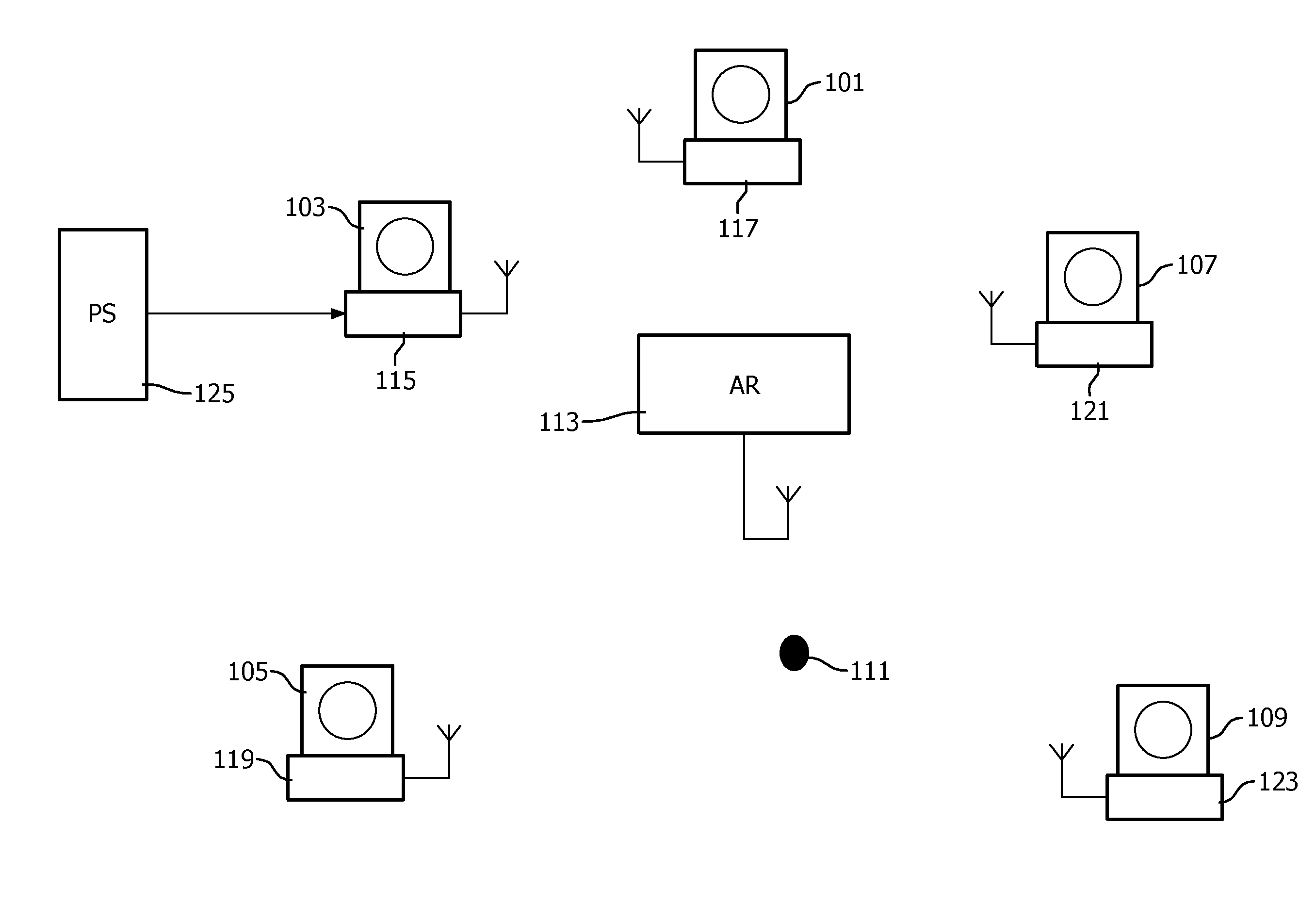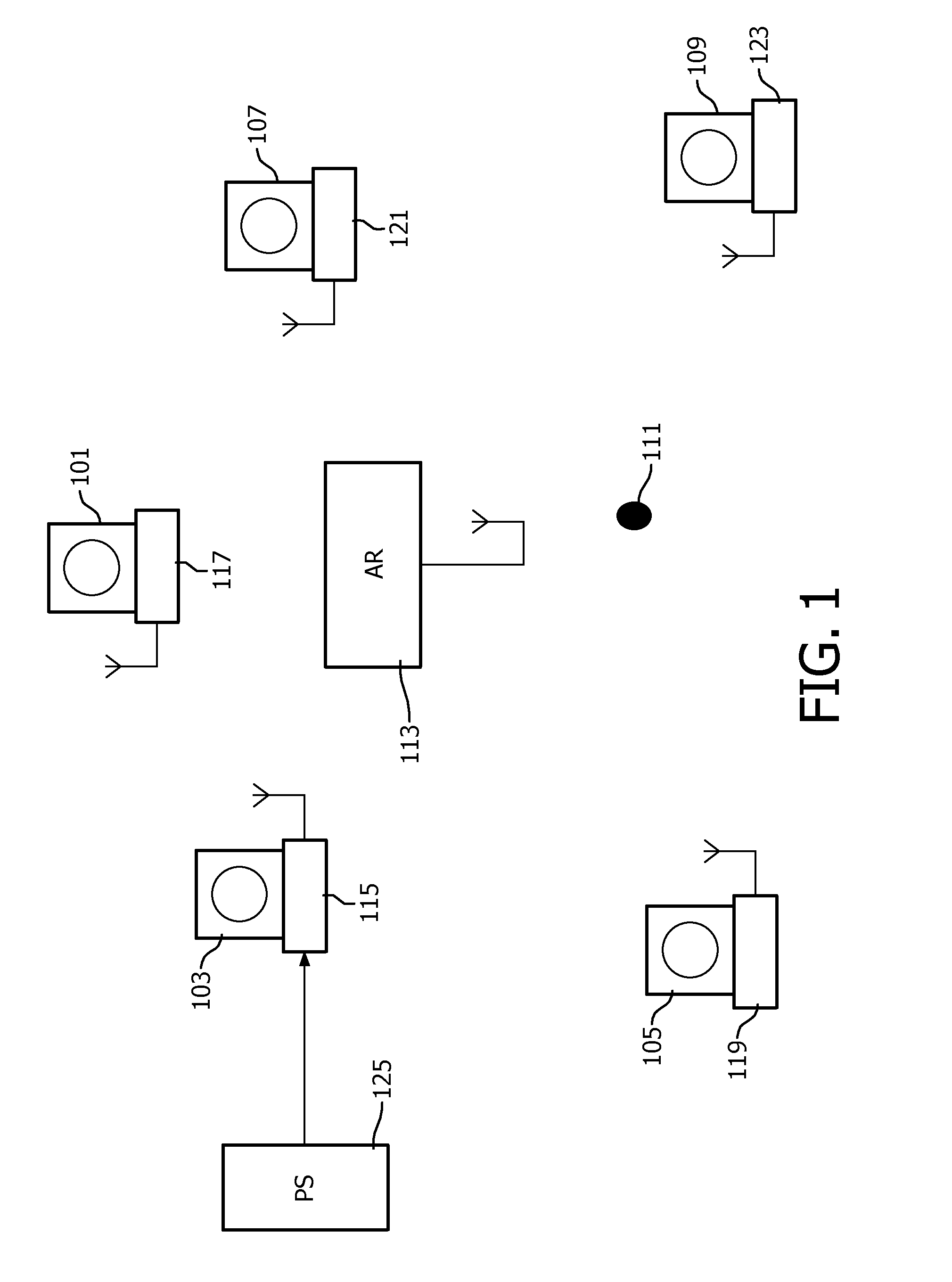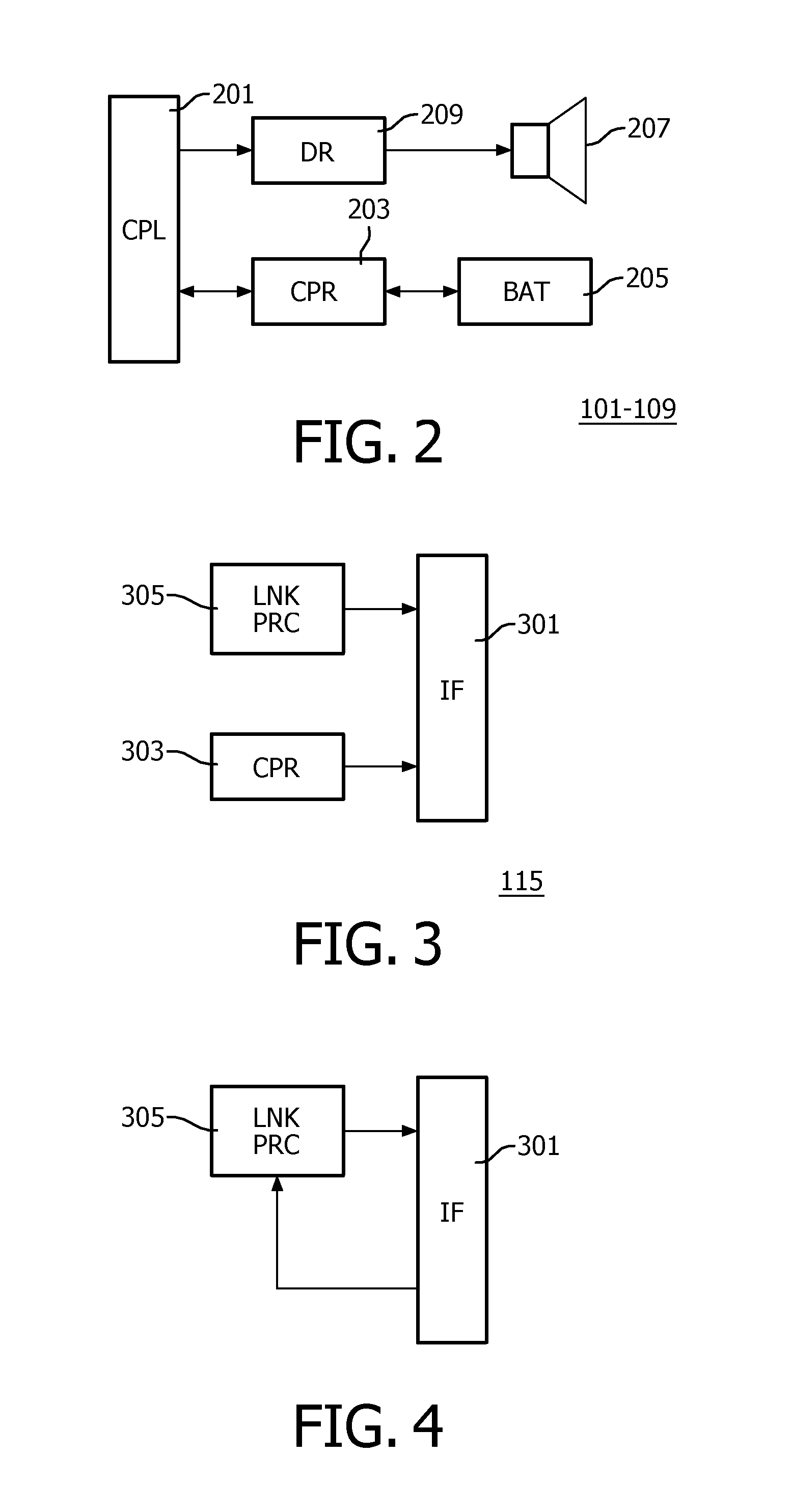Multi-Channel Audio Rendering
a multi-channel audio and audio technology, applied in the direction of stereophonic circuit arrangements, instruments, transportation and packaging, etc., can solve the problems of limiting and encumbering later changes in the setup, wire crossing from one side of the room, and few people willing to invest time and money required, so as to facilitate the setup of the rendering system, avoid the need for wireless technology, and reduce complexity and/or cost
- Summary
- Abstract
- Description
- Claims
- Application Information
AI Technical Summary
Benefits of technology
Problems solved by technology
Method used
Image
Examples
Embodiment Construction
[0068]The following description focuses on embodiments of the invention applicable to spatial audio rendering system and in particular to a surround sound home cinema system. However, it will be appreciated that the invention is not limited to this application but may be applied to many other multi-channel audio rendering systems.
[0069]A home cinema surround sound system generates a spatial experience by rendering spatial audio channels from speakers positioned at nominal positions relative to a listening position. Typically, surround sound systems use five or seven audio channels / speakers but other configurations are also possible.
[0070]FIG. 1 illustrates an example of an audio rendering system in accordance with some embodiments of the invention. The audio rendering system is specifically a five channel surround sound system and thus includes five speaker units 101, 103, 105, 107, 109 positioned around a listening position 111. When in use, each of the five speaker units 101, 103,...
PUM
 Login to View More
Login to View More Abstract
Description
Claims
Application Information
 Login to View More
Login to View More - R&D
- Intellectual Property
- Life Sciences
- Materials
- Tech Scout
- Unparalleled Data Quality
- Higher Quality Content
- 60% Fewer Hallucinations
Browse by: Latest US Patents, China's latest patents, Technical Efficacy Thesaurus, Application Domain, Technology Topic, Popular Technical Reports.
© 2025 PatSnap. All rights reserved.Legal|Privacy policy|Modern Slavery Act Transparency Statement|Sitemap|About US| Contact US: help@patsnap.com



